Rush broom identification and control
Information about the noxious weed rush broom. Rush broom is also known by its Latin name, Spartium juneum.
About this weed
Rush broom is a regulated Class A noxious weed. Eradication is required in King County and throughout the state. Rush broom is also on the Washington quarantine list making it illegal to buy, sell, or offer it for sale in the state.
Rush broom is known as Spartium juneum and it is in the pea family, Fabaceae. It is also known as Spanish broom.
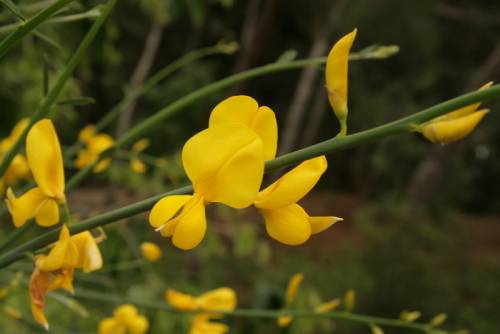
Why it's a noxious weed
Rush broom is a noxious weed because of its high seed production and aggressive replacement of native and beneficial plants. Its seeds and other plant parts are toxic to humans, horses, and livestock.
Rush broom is very drought tolerant compared to other broom species. It can also alter the surrounding soil chemistry in a negative way. This can be particularly damaging to prairie habitats of the Pacific Northwest. It creates dense stands that shade out prairie species and block the movement of wildlife.
Rush broom is a potential fire hazard and may increase the intensity of grassland and forest fires.
Plant description
Rush broom can grow 6 to 10 feet tall, generally prefers low-nutrient, rocky or sandy soils in full sun, and is most often found escaping into disturbed areas such as roadsides, exposed hillsides, trails, parks, and vacant lots. Plants can bloom from July until frost.
The mainly leafless stems branch off at the top, ending with clusters of flowers on leafless racemes (stalks). The leaves are simple or one-parted (as compared to the three-parted leaves of Scotch broom) and are alternate (leaves which grow staggered, without a pair on the stem) and less than 1 inch long. The leaf shape is linear to lanceolate (lance/spearhead shaped), and hairs are present on the lower surface.
Flowers are fragrant, bright yellow and pea-shaped, approximately 1 inch long. They grow in clusters at the branch ends on stalks that can be 18 inches long. The fruits are hairy seed pods, flat and linear, up to 3 inches long. Rush broom spreads by seed.
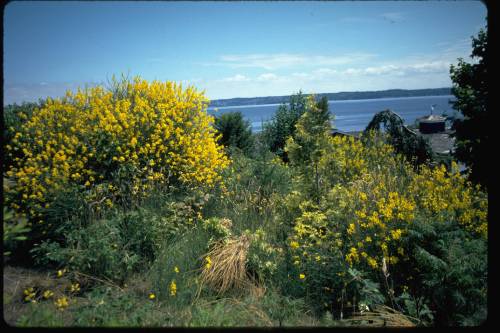

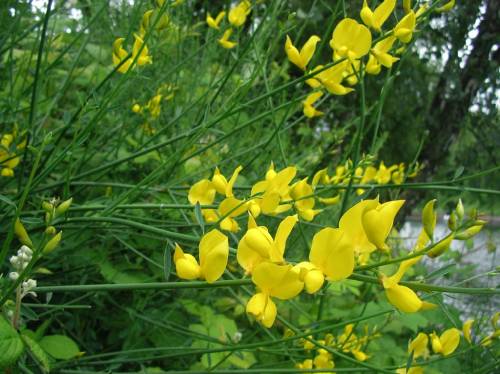
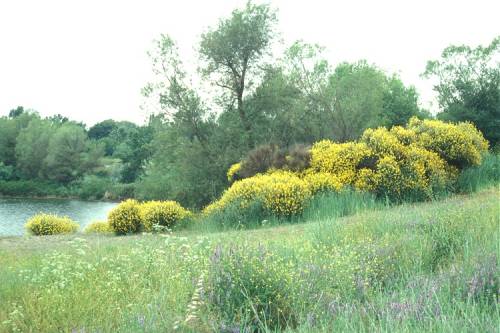


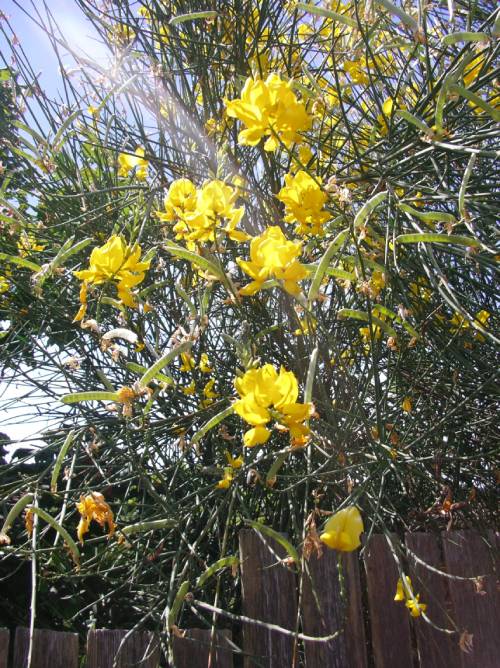
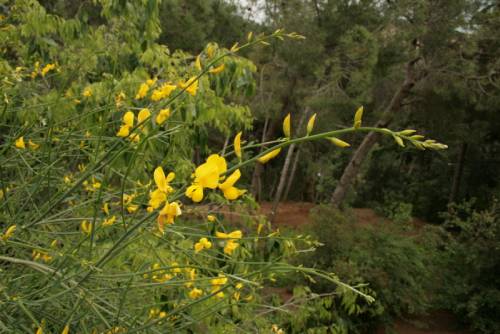
Be aware of look-alike plants
Rush broom resembles these noxious weeds:
Rush and Scotch broom are close relatives and often are found growing together. Scotch broom, however, is much more widespread in King County and thus not required for control.
Identifying one broom from the other can be difficult, but the main difference is Scotch broom stems are ridged while rush broom stems are round and smooth. Another distinction: rush broom flowers are very fragrant; the flowers on Scotch brooms are not.
Soft broom is also a Class A noxious weed. The only known escaped population of soft broom in King County is on the campus of the University of Washington near the Montlake Bridge.
Soft broom flowers are in clusters of 4-10 flowers at the ends of short branchlets off the side of the main stems. This is different to rush broom flowers, which grow in clusters at the end of the stalk. Also, unlike rush broom, soft broom stems are typically leafy, and often more strongly ridged and covered in silky, silvery hairs.
When in doubt, take photos and share them with us or report them on iNaturalist.
What to do if you find it
Property owners are required to control rush broom on lands that they manage. Please notify us if you see rush broom growing in King County.
Our program staff can provide the property owner or appropriate public agency with site-specific advice on how best to remove it. We map all known locations of regulated noxious weeds such as rush broom in order to help us and others locate new infestations in time to control them.
Also, because rush broom is not generally established in King County, we have an opportunity to stop it from spreading if we act quickly when new plants are found.
Control methods
We recommend using a combination of methods to control noxious weeds. In areas with few weeds, it is important to act quickly before they become harder to control. Make a long-term plan as it often takes several years to get rid of most weeds. Start in the least infested areas first and then move into more heavily infested areas.
Be sure to clean your shoes and tools carefully after working in any weed infested area to prevent further spread.
For more in-depth control information, read Best Management Practices (BMP) for rush broom
Manual control
For small sites with few plants, pull or dig up plants and remove as much root as possible so the plant will not re-sprout. Repeated cutting of plants to ground level can keep plants from spreading but will not usually kill them.
Pulling of medium to large plants is much easier with specially designed steel weed tools. These tools and others can be borrowed from Tool Libraries in the region.
Chemical control
Stay safe when using herbicide:
- Always read the label before use.
- Wear a long-sleeved shirt, long pants, shoes, and eye protection.
- Follow state and local regulations.
A variety of chemical applications can also be effective at controlling rush broom infestations.
For specific chemical recommendations, please refer to the PNW Weed Management Handbook.
Disposal instructions
For small infestations cut gorse into smaller pieces and put into heavy duty garbage bags for disposal. Composting seed pods at home or in municipal yard waste is not recommended.
Noxious Weed Disposal - Washington State Noxious Weed Control Board

 Translate
Translate